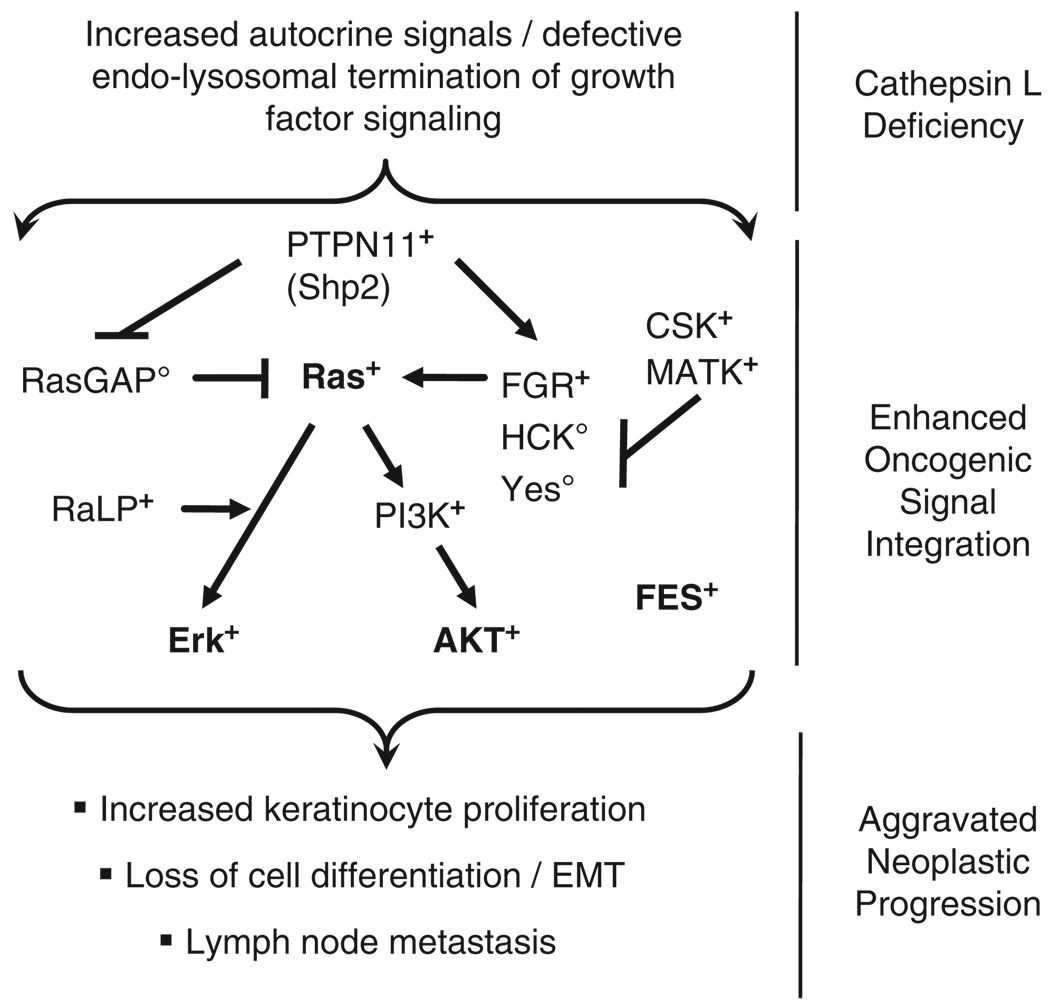Figure 6.
Oncogenic signaling in cathepsin L (Ctsl)-deficient keratinocytes. A Ctsl deficiency in keratinocytes causes the release of as yet unidentified growth factors from keratinocytes, resulting in oncogenic signaling within the keratinocytes (see Figure 5). This appears to be a keratinocyte-specific autocrine process (see Figures 3 and 4), explaining the aggravated neoplastic progression in Ctsl-deficient HPV16 mice (see Figures 1 and 2). +denotes proteins with increased function/activation in Ctsl−/− keratinocytes. ○denotes proteins with reduced activation state in Ctsl−/− keratinocytes. Activation ( ) and inhibition (
) and inhibition ( ) of the signaling pathways. AKT (PKB, proteinkinase B); CSK (C-SRC tyrosine kinase); ERK (extracellular-signal regulated kinase); FES (proto-oncogene tyrosine-protein kinase FES/FPS (cFES)); FGR (Gardner-Rasheed feline sarcoma viral (v-fgr) oncogene homolog); HCK (hemopoietic cell kinase isoform p61HCK); P85B (phosphoinositide-3-kinase, regulatory subunit, polypeptide 2 (p85 beta)); PTPN11-D1/D2 (protein tyrosine phosphatase, non-receptor type 11, SH2domain #1/#2 (also termed Shp2)); RaLP (Rai-like protein RaLP); RASGAP (RAS p21 protein activator (GTPase activating protein) 1); YES (Yamaguchi sarcoma viral (v-yes) oncogene homolog 1).
) of the signaling pathways. AKT (PKB, proteinkinase B); CSK (C-SRC tyrosine kinase); ERK (extracellular-signal regulated kinase); FES (proto-oncogene tyrosine-protein kinase FES/FPS (cFES)); FGR (Gardner-Rasheed feline sarcoma viral (v-fgr) oncogene homolog); HCK (hemopoietic cell kinase isoform p61HCK); P85B (phosphoinositide-3-kinase, regulatory subunit, polypeptide 2 (p85 beta)); PTPN11-D1/D2 (protein tyrosine phosphatase, non-receptor type 11, SH2domain #1/#2 (also termed Shp2)); RaLP (Rai-like protein RaLP); RASGAP (RAS p21 protein activator (GTPase activating protein) 1); YES (Yamaguchi sarcoma viral (v-yes) oncogene homolog 1).

